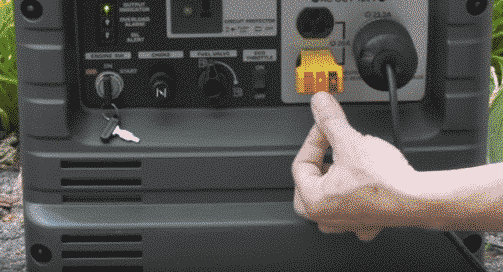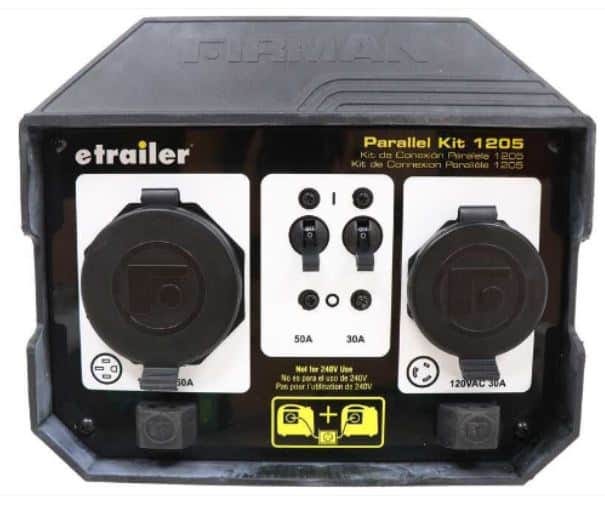Bonding a 20-amp generator outlet with a 15-amp plug
How to bond a floating neutral generator for an EMS protected RV
Welcome to my J.A.M. (Just Ask Mike) Session, a weekly column where I answer your basic electrical questions. If you’re a newbie who’s never plugged in a shore power cord (or ask – what’s a shore power cord?), or wonder why your daughter’s hair dryer keeps tripping the circuit breaker, this column is for you. Send your questions to Mike Sokol at mike@noshockzone.org with the subject line – JAM. Today I discuss neutral/ground bonding plugs, inverter generators and EMS/advanced surge protectors.
Hey Mike,
While trying to figure out how to use my surge protector with my generators, I found your article about fixing the open ground problem with an inverter generator. I have two Cummins Onan P4500i generators for my 50-amp camper, which I run in parallel to have enough power to operate both AC units.
Then I had the same issue where the surge protector would not allow power to travel due to the “open ground” message. After reading your article I understand the reason now and the fix you describe. I have two questions I’d like to have answered to make sure I don’t cause any damage:
My questions
My Cummins Onan P4500i has two 20-amp Edison outlets. The article and information related to the Southwire neutral ground bonding plug say to plug this into the 15-amp Edison outlet. But since mine are 20-amp outlets, is it safe to use this plug with a 20-amp outlet?
I run my two Cummins P4500i in parallel to get the needed power for two AC units. Will I need a Southwire neutral ground bonding plug for each generator when using the parallel function?
Thank you for your time. —Travis
Dear Travis,
Those are two great questions that are pretty simple to answer. For those of you lurking in the shadows, most (if not all) inverter generators have something called a floating or unbonded neutral. That’s just technospeak way of saying the neutral conductor is not connected (bonded) to the chassis ground of the generator.
While this doesn’t matter for a lot of things, if your RV has an EMS/advanced surge protector that can shut off the power in the event of an open ground, it’s a problem. That’s because the control circuitry in the EMS/advanced surge protector misinterprets this floating neutral as an open ground. Here’s a picture of what this looks like with a 3-light outlet tester pugged into a generator. Note that it shows “open ground” when it’s actually a “floating neutral.”
My simple generator bonding plug fix….
My neutral/ground bonding plug invention simply connects (bonds) the ground and neutral conductors together at the power source (the inverter generator), which is exactly how all power pedestals and residential outlets are supposed to be connected to the service panel. This is not a trick to circumvent a missing ground conductor in old residential wiring. In fact, all installed generators in RVs are internally bonded just like this.
What about 15-amp plugs in 20-amp outlets?
It really doesn’t matter if you insert a 15-amp bonding plug into a 15-amp or 20-amp outlet. There’s actually no electrical current-carrying difference, both are capable of 20-amps.
The trick is that you can insert a 15-amp plug into a 15- or 20-amp outlet, but you can only insert a 20-amp plug into a 20-amp outlet. See how the sideways blade on the 20-amp plug is keyed so it won’t fit into a 15-amp outlet. Electrically, the internal contact areas are the same for both 15-amp and 20-amp versions of these “Edison” outlets.
However, 20-amp outlets tend to be built more heavy-dutily [editor: Yes, that’s a Mike term, not a typo], which is why we like them for higher-power connections. In your case, a 15-amp neutral/ground bonding plug will work perfectly in a 20-amp outlet.
What about bonding parallel generators?
There only needs to be ONE neutral/ground bonding plug for inverter generators connected in parallel. If you have a companion/standard pair of generators, it should be plugged into the generator with the twist-lock 30-amp outlet.
I’m not exactly sure how your pair of Cummins Onan generators are linked together for parallel operation. But you only need one neutral/ground bonding plug inserted into a spare 20-amp outlet. That will bond the generator pair properly. Above is a picture of how it works with two Honda generators in parallel, one of which is a companion model.
How about Y-connector parallel kits?
However, I suspect you may have something that looks more like this parallel kit. If that’s the case, you should be able to insert the 15-amp bonding plug into either of your generator’s spare 20-amp outlets. But you may need to confirm that your parallel connecting cables are polarized, at least by marking one pair with white tape. Normally this isn’t an issue if the parallel wiring is swapped, but it can accidentally reverse the polarity of the neutral/ground bonding plug.
OK, everyone. Remember that electricity is a useful and powerful force, so we all need to pay attention to safety precautions while using it.












Hey Mike,
Love your content. I own a business called www.portlandrvsolar.com and I am a licensed solar electrician in Oregon. I install solar on homes and now rvs. I've been working with some local rv installers and some distributors and this doesn't seem to be a topic that is addressed enough especially with all these new solar battery generators. There are also alot of diyers that don't quite understand this issue as well.
Seems like the neutral to ground plug would work to fix the issue of a floating neutral battery generator as then there is a pathway for the fault current and be able to trip any breakers that are associated with it. Anyways thanks for all this information. I hope people are safe, but I am afraid with all these diyers putting in systems that more accidents will happen. As a business I am doing my due diligence and installing systems that are electrically sound, but I am unsure if others in the industry are not...
Here is what I heard from one local off grid distributor is that they don't recommend grounding inverters to the chassis... cause its causes too many issues on GFCI's. Which I replied that means your system isn't working properly then... their liability I guess, but very concerning that people without electrical training are recommending certain products and installation methods that are not sound electrically.
2- 4500's in Parallell? One 4500 should run 2- AC units. And easily run them if Soft Starts are added. This scenario could overload your 50 amp Neutral unless the setup is providing true 240V output.